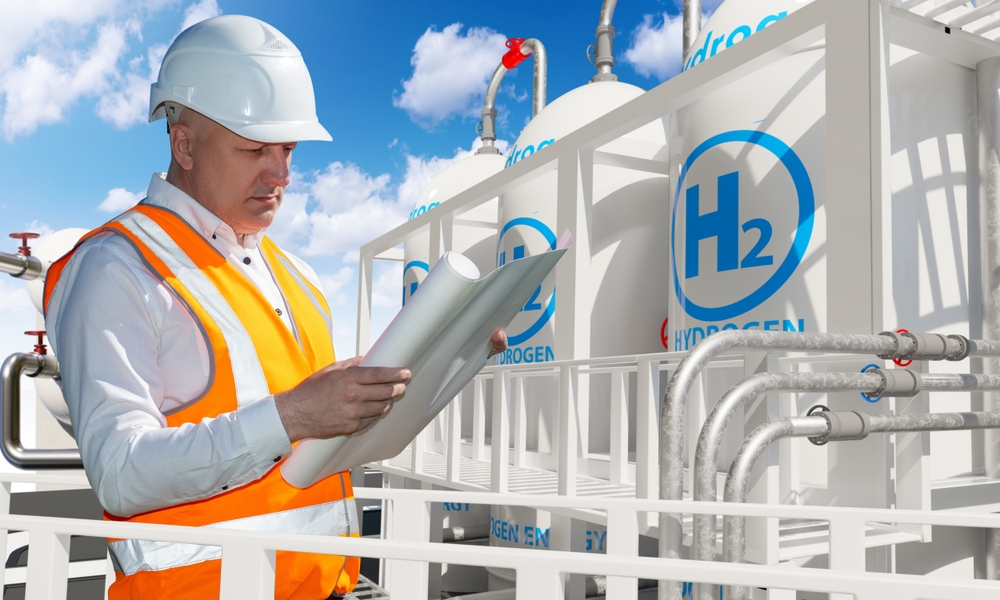Roar Solutions for Dummies
Roar Solutions for Dummies
Blog Article
The Ultimate Guide To Roar Solutions
Table of ContentsSome Of Roar SolutionsGetting My Roar Solutions To WorkThe Main Principles Of Roar Solutions
In order to secure installments from a prospective explosion a method of analysing and identifying a possibly hazardous area is needed. The function of this is to make certain the proper selection and installation of tools to inevitably prevent a surge and to guarantee safety and security of life.
(https://zenwriting.net/roarsolutions/master-your-skills-with-electrical-refresher-and-hazardous-area-courses)
No devices ought to be mounted where the surface temperature level of the tools is more than the ignition temperature level of the given risk. Below are some common dirt hazardous and their minimal ignition temperature. Coal Dust 380C 225C Polythene 420C (melts) Methyl Cellulose 420C 320C Starch 460C 435C Flour 490C 340C Sugar 490C 460C Grain Dust 510C 300C Phenolic Resin 530C > 450C Aluminium 590C > 450C PVC 700C > 450C Soot 810C 570C The possibility of the hazard being present in a focus high adequate to cause an ignition will vary from area to area.
In order to categorize this danger an installment is divided into locations of danger relying on the quantity of time the dangerous is existing. These locations are referred to as Areas. For gases and vapours and dirts and fibers there are three areas. Zone 0 Area 20 A dangerous atmosphere is extremely likely to be present and may be existing for extended periods of time (> 1000 hours each year) or perhaps continually Zone 1 Zone 21 An unsafe ambience is possible however unlikely to be existing for extended periods of time (> 10 450 C [842 F] A classification of T6 suggests the minimal ignition temperature is > 85 C [185 F] Unsafe area electrical tools possibly created for usage in greater ambient temperatures. This would showed on the score plate e.g. EExe II C T3 Ta + 60C( This implies at 60C ambient T3 will not be gone beyond) T1 T1, T2, T3, T4, T5, T6 T2 T2, T3, T4, T5, T6 T3 T3, T4, T5, T6 T4 T4, T5, T6 T5 T5, T6 T6 T6 A T Course score of T1 implies the optimum surface area temperature created by the instrument at 40 C is 450 C. Assuming the associated T Class and Temperature level ranking for the tools are proper for the location, you can always make use of an instrument with a more rigorous Department rating than needed for the location. There isn't a clear solution to this question. It actually does rely on the sort of equipment and what repair services require to be executed. Devices with particular examination treatments that can not be executed in the area in order to achieve/maintain third celebration ranking. Need to return to the manufacturing facility if it is before the equipment's solution. Field Repair Service By Authorised Personnel: Complex screening might not be needed however certain procedures may need to be complied with in order for the tools to keep its 3rd party ranking. Authorised personnel have to be utilized to do the work properly Repair must be a like for like replacement. New component should be taken into consideration as a direct replacement needing no special testing of the equipment after the repair work is full. Each tool with a hazardous score must be evaluated independently. These are described at a high degree listed below, but for more detailed info, please refer straight to the standards.
Roar Solutions for Beginners
The equipment register is an extensive database of devices documents that consists of a minimum set of areas to determine each product's place, technological parameters, Ex category, age, and ecological data. This details is vital for tracking and handling the equipment successfully within hazardous locations. In contrast, for regular or RBI sampling examinations, the grade will certainly be a combination of Thorough and Close inspections. The ratio of Detailed to Shut inspections will certainly be established by the Devices Danger, which is assessed based on ignition threat (the chance of a resource of ignition versus the likelihood of a combustible ambience )and the harmful location classification
( Area 0, 1, or 2). This variant will certainly likewise affect the resourcing demands for work prep work. When Whole lots are specified, you can develop tasting strategies based upon the sample dimension of each Great deal, which refers to the variety of arbitrary tools products to be inspected. To establish the called for example size, two aspects require to be assessed: the dimension of the Whole lot and the group of evaluation, which suggests the level of initiative that should be applied( minimized, typical, or enhanced )to the evaluation of the Great deal. By incorporating the group of inspection with the Lot size, you can after that develop the proper rejection criteria for a sample, implying the allowable variety of faulty items located within that example. For even more details on this process, please refer to the Energy Institute Standards. The IEC 60079 typical recommends that the maximum interval between inspections must not surpass three years. EEHA evaluations will certainly additionally be performed beyond RBI campaigns as part of set up maintenance and devices overhauls or repair work. These inspections can be credited towards the RBI sample dimensions within the influenced Whole lots. EEHA inspections are performed to recognize faults in electrical equipment. A weighted scoring system is crucial, as a single tool may have multiple mistakes, each with differing degrees of ignition danger. If the consolidated score of both evaluations is much less than twice the mistake score, the Great deal is regarded acceptable. If the Great deal is still taken into consideration undesirable, it should go through a complete assessment or validation, which might set off stricter evaluation protocols. Accepted Great deal: The reasons for any kind of mistakes are determined. If a typical failing mode is found, extra equipment may require evaluation and fixing. Mistakes are identified by extent( Safety and security, Integrity, House cleaning ), making sure that urgent issues are examined and resolved without delay to mitigate any kind of influence on security or procedures. The EEHA database must track and videotape the lifecycle of faults along with the rehabilitative activities taken. Implementing a robust Risk-Based Evaluation( RBI )approach is this page vital for making certain conformity and safety in handling Electrical Equipment in Hazardous Areas( EEHA) (Roar Training Solutions). Automated Mistake Rating and Lifecycle Management: Easily manage faults and track their lifecycle to enhance assessment accuracy. The introduction of this support for risk-based examination additionally enhances Inspectivity's setting as a best-in-class service for regulatory conformity, in addition to for any type of asset-centric examination use instance. If you have an interest in learning a lot more, we welcome you to ask for a presentation and find how our solution can change your EEHA management procedures.
Some Ideas on Roar Solutions You Should Know

In regards to eruptive danger, a hazardous area is an environment in which an explosive environment is existing (or may be anticipated to be present) in quantities that need unique safety measures for the construction, setup and use equipment. hazardous area course. In this article we discover the difficulties encountered in the workplace, the danger control measures, and the required competencies to work securely
These compounds can, in specific conditions, create eruptive ambiences and these can have significant and terrible consequences. Most of us are acquainted with the fire triangle remove any kind of one of the 3 elements and the fire can not happen, however what does this mean in the context of unsafe locations?
In many instances, we can do little regarding the levels of oxygen airborne, however we can have significant influence on resources of ignition, as an example electrical equipment. Dangerous areas are recorded on the harmful location category illustration and are recognized on-site by the triangular "EX LOVER" sign. Below, among various other vital information, areas are split into three types relying on the danger, the chance and period that an eruptive environment will certainly exist; Zone 0 or 20 is considered the most harmful and Zone 2 or 22 is regarded the least.
Report this page